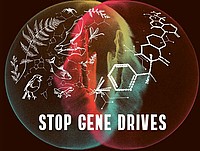16.11.2017 | permalink
Standard CRISPR gene drives may work too well to be used for conservation
Gene-editing tools heralded as hope for fighting invader rats, malarial mosquitoes and other scourges may be too powerful to use in their current form, two new papers warn.
Standard forms of CRISPR gene drives, as the tools are called, can make tweaked DNA race through a population so easily that a small number of stray animals or plants could spread it to new territory, predicts a computer simulation released November 16 at bioRxiv.org. Such an event would have unknown, potentially damaging, ramifications, says a PLOS Biology paper released the same day.
“We need to get out of the ivory tower and have this discussion in the open, because ecological engineering will affect everyone living in the area,” says Kevin Esvelt of MIT, a coauthor of both papers who studies genetic solutions to ecological problems. What’s a pest in one place may be valued in another, so getting consent to use a gene drive could mean consulting people across a species’s whole range, be it several nations or continents.



